Covid-19 has stuck around longer than anyone expected, but consumers rebounded in 2021 with personal vacations, and 60% of companies resumed incentive trips in 3Q 21.
In 2022, 90% of U.S. adults* have immunities (at least some degree with vaccinations or natural antibodies), and 90% of companies will hold their President Club trips. (*Emphasis on “adults” because the media often shares statistics on the total population, but children are not traveling for business meetings and club trips.)
The pandemic has shifted expectations, and new trends emerged. Our brightest globetrotters have summarized their research, insights, and must-dos.
TO-DO LIST – MEETINGS
1. Accelerate Content
Virtual meetings changed content delivery over the last two years. Online meetings were 50% shorter because Zoom fatigue was a real symptom. Shorter meetings forced presenters to prioritize their messages and shrink content by 50%. With audiences having shorter attention spans from staring at screens all day and knowing their inboxes and pressing work projects were one click away, virtual meetings had to accelerate their pace and go faster. Even though large-scale virtual conferences are fading away, audience expectations will remain for shorter and faster presentations.
TO DO: Be focused; be faster
2. Decelerate Breaks
While presentations will run faster and individual sessions get shorter, the meal and refreshment breaks should slow down and get longer in 2022. People value F2F (face to face) after shutdowns took it away. They’ve not seen their colleagues in other cities for two years, so they are ready to reconnect. Allowing more time for casual, informal catch-up conversations will be desired. And, a little extra time to check their email will help people focus when the content is running fast.
TO DO: Start later, end earlier, add downtime in between
3. Personalize
During the pandemic, an odd paradox has emerged. We’ve been simultaneously more out of control and in control. At a macro, external level, employees have endured two years of government lockdowns, and offices told them to stay home. Other public health advisories commanded: get a vaccine, wear a mask, use sanitizer, don’t go to a restaurant, and walk one direction in the grocery store. At the micro, internal level in our homes, we had more control. Wear shorts or yoga pants. Flexible working hours. No calls from 2-4; squeeze in a 30-minute run. Do laundry on Friday instead of Saturday. So, for 2022, these mindsets will carry over to business meetings and conferences. Attendees will want to personalize their event experience with more options and flexible agendas.
TO DO: Offer options to personalize
4. Increase Budget
Some execs might be stuck mentally in 2017 budgets, or they might think mistakenly that Covid shutdowns have hungry hotels offering bargains. A big word in the meetings industry is “compression.” Two years of rescheduled meetings are squeezing onto a 2022 calendar that already had existing event bookings. Covid safety protocols have increased hotel costs. Inflation is raging, and labor shortages are driving up labor costs. And back in 2017, 2018, and 2019, hotel rates had jumped by 5% for three consecutive years.
TO DO: Tell the CFO to get more money
TO-DO LIST – INCENTIVE TRAVEL
5. Keep F2F
Many President Club Trips canceled in 2020 and 2021, and companies substituted merchandise prize packages, gift cards, or cash payouts. For 2022, sales rainmakers have shifted to an “endemic” mindset (a disease that is consistently present with a more limited outbreak and milder symptoms, which was starting to occur pre-omicron and scientists predict will happen after Omicron). For 2022, 90% of companies will hold their P-Club trips again; 90% have immunity to some degree; and 90% of invitees are opting to attend the club trip. Consumer travel has rebounded strongly, as evidenced by Thanksgiving travel approaching 2019 levels. So, consumers are ready to go, even if companies remain a little cautious.
TO DO: Recognize 90% pent-up demand for travel
6. Recognize (or else resignation)
Bright CEOs understand The Great Resignation is the biggest threat to their business. It threatens their sales, customer service, expertise, excellence, and just about everything else. Now is the time to double efforts on employee recognition, invest more in culture, strengthen personal relationships, increase training and professional development opportunities, and add more fun into the workday.
TO DO: Say “thank you” and surprise & delight employees
7. Reset Strategy
Many politicians say, “Don’t let a crisis go to waste.” While that is distasteful to us regular folks, the Covid pause has broken the handcuffs of past precedence. Executives should seize this window of opportunity to reconsider their incentive strategies. Brainstorm with your leadership team. What are the true goals? What has changed in the business? Should qualification rules adjust? Audience preferences? Does a destination rotation make sense? For U.S. companies – Hawaii, Caribbean, Europe. For global companies – North America, Europe, Asia.
TO DO: Re-evaluate
8. Manage Risk
This to-do is the most expected, but it’s still important. Ensure meeting planners apply safety protocols, prepare security plans, and take the duty-of-care responsibilities seriously. However, don’t over-rotate; 77% of planners predict a similar trip or only moderate changes.
TO DO: Make minor tweaks
9. Adjust Agenda
Like #8, meeting experts have discussed the importance of flexible activities that allow trip winners to personalize their getaway. More free time allows winners to relax after two stressful years, and the budget savings from fewer activities can be allocated to more luxury. Individual activities are more popular (and safer) than large catamaran sailing. And wellness is the new golf.
TO DO: Give winners more choices
10. Nearer in 22, Farther in 23
Research from the IRF (Incentive Research Foundation) and SITE (Society for Incentive Travel Excellence) reported that companies and individuals are more comfortable with in-region travel in 2022 and transcontinental, international trips in 2023. To jumpstart brainstorming, see these resources:
TO DO: Start bucket-list daydreaming
11. Don’t Be Last (to the party)
People are ready to pack their suitcases. Consumer leisure travel has exploded with revenge travel. And companies resumed group incentive travel in 3Q and 4Q 2021. Lastly, business transient travel is the laggard, as it’s been slower to rebound as companies remain more cautious (or the CFO doesn’t want to let a crisis go to waste).
TO DO: The perfect time will be too late.
Want even more?
Join us for a 45-minute, fast-paced webinar on Wednesday, January 19, 2:00-2:45 CT. Hear more details of trends and takeaways – and ask the experts your question during the live Q&A session. Free consulting! If you find you missed the webinar, no worries! Click the link below to view the recorded video.


